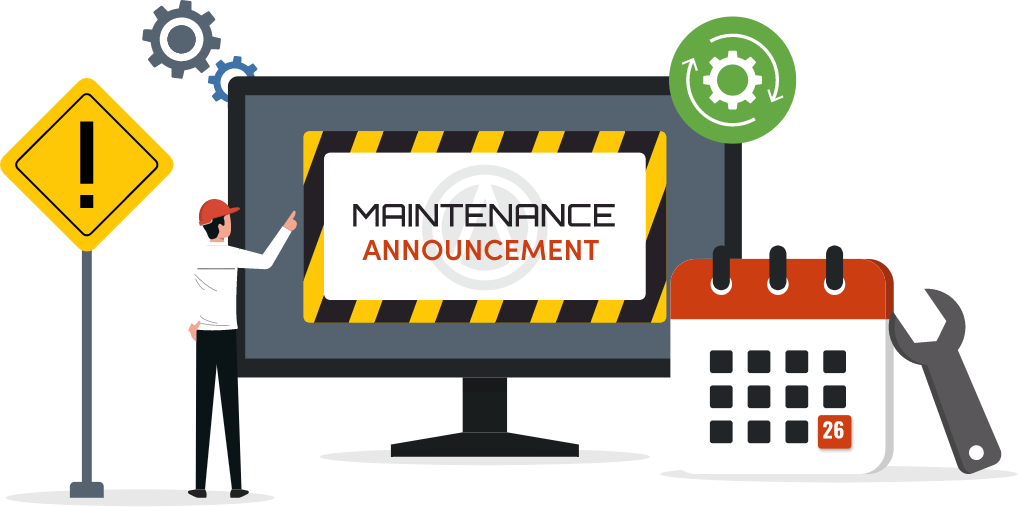What is income statement?
An income statement is a financial report that shows your restaurant's revenues, costs, and expenses over a specific period, revealing whether you made a profit or loss. It helps owners track performance and make informed business decisions.
Understanding Your Restaurant Income Statement
Importance of Income Statements
Running a restaurant is about more than great food and service - it's also about making smart financial decisions. One of the most important tools to help with this is your income statement. Also known as a profit and loss (P&L) statement, this document shows how much money your restaurant made, how much it spent, and whether you ended up with a profit or a loss over a specific period.
For many restaurant owners, income statements can seem confusing or overly technical. But they don't have to be. When you break it down piece by piece, this report becomes a clear and powerful snapshot of your business's financial health. Whether you're reviewing your monthly performance or preparing for tax season, understanding your income statement is key to staying on top of costs, spotting trends, and making better decisions.
The Structure of a Restaurant Income Statement

Before diving into the individual parts, it's important to understand how an income statement is organized. At its core, an income statement follows a simple formula -
Revenue - Expenses = Net Profit (or Loss)
This layout helps you see exactly how much money came into your restaurant during a specific time period and how much went out. The result is your bottom line, showing whether you made money or lost it.
Key Components
1. Revenue (Sales) - This is the total income your restaurant earned before any expenses. It includes all food and beverage sales, delivery or takeout, catering, and sometimes even merchandise if applicable.
2. Cost of Goods Sold (COGS) - These are the direct costs of the items you sell - mainly food, beverages, and packaging. COGS shows how much it costs you to produce the meals that generate your revenue.
3. Labor Costs - Includes hourly wages, salaries, payroll taxes, and employee benefits. Since labor is one of the largest expenses in food-service, it's listed separately to help you track and manage it more closely.
4. Operating Expenses - These are the day-to-day costs of running the restaurant, such as rent, utilities, insurance, marketing, cleaning supplies, and equipment maintenance.
5. Net Profit or Loss - After subtracting all your expenses from your revenue, you're left with your net income. A positive number means you're profitable. A negative number signals a loss that should be investigated.
Reporting Periods
Income statements are typically prepared monthly, quarterly, or annually. Many restaurant owners review them monthly to catch issues early - like rising food costs or declining sales - so they can respond quickly. Comparing statements over time can also reveal seasonal trends, staffing inefficiencies, or menu items that need adjustment.
Understanding the structure of your income statement helps you connect the dots between daily operations and long-term financial health. It turns your numbers into insights - and those insights into action.
The Smarter Choice for Maximizing Your Financial Potential
Streamline Your Restaurant's Finances with Altametrics!
Revenue
Revenue is the starting point of your income statement - it's where you account for all the money your restaurant brings in before any expenses are deducted. Getting this section right is essential because it sets the tone for everything that follows. If your revenue is off, so is your entire financial picture.
What Counts as Revenue?
Revenue includes all sources of income your restaurant generates. Most commonly, this includes -
1. Dine-in Sales - Food and beverage purchased by customers eating on-site
2. Takeout and Delivery Sales - Orders fulfilled off-premises, including through third-party apps
3. Catering - Income from off-site events or large-scale food service
4. Retail or Merchandise - Branded items like sauces, T-shirts, or packaged foods
5. Gift Card Redemptions - When customers use prepaid cards, the redeemed amount is considered revenue
Make sure to record gross revenue (total sales before discounts or refunds) and then account for any returns, comps, discounts, or promotions that lower the actual cash received.
Categorizing Revenue
For better clarity, many restaurants break revenue into categories such as -
- Food vs. beverage
- Alcoholic vs. non-alcoholic drinks
- Dine-in vs. takeout/delivery
- Weekday vs. weekend sales
This segmentation helps you identify what's performing well and where you might need to adjust your strategy. For example, if delivery revenue is growing but dine-in is falling, you may want to invest more in online ordering and delivery efficiency.
Why Revenue Tracking Matters
Accurate revenue tracking allows you to -
- Set realistic sales goals
- Measure success across different service channels
- Compare current performance with previous periods
- Detect underperforming shifts or locations (if you have more than one)
Finally, always match your revenue reporting period with your expenses to get an accurate picture of profit. Looking at revenue alone is misleading - without context, high sales could still hide a loss if your costs are too high.
Cost of Goods Sold (COGS)
Cost of Goods Sold (COGS) represents the direct costs required to produce the food and drinks you sell. In simple terms, it's what you spend on ingredients, beverages, packaging, and other items that go directly into a customer's order. Understanding and managing your COGS is essential to maintaining healthy profit margins.
What's Included in COGS?
COGS typically includes -
- Food and beverage purchases
- Paper goods and packaging (especially for takeout and delivery)
- Condiments and disposables
- Inventory adjustments (beginning inventory + purchases ending inventory)
It's important to exclude indirect costs like labor, utilities, or rent from this category. Only expenses directly tied to the production of goods sold should be included here.
How to Calculate COGS
Here's a basic formula -
COGS = (Beginning Inventory + Purchases) - Ending Inventory
For example, if you started the month with $10,000 in inventory, purchased $20,000 in ingredients, and ended the month with $8,000 in inventory, your COGS would be $22,000.
Why COGS Matters
COGS is a major driver of profitability. It helps answer questions like -
- Are we over-ordering or wasting ingredients?
- Are food costs increasing due to supplier price changes?
- Are portion sizes too large or inconsistent?
- Are we pricing menu items correctly?
A well-managed restaurant typically aims for a COGS percentage between 25% and 35% of total revenue. Fast food or quick-service models may trend lower, while full-service restaurants with more complex dishes may be higher.
Managing COGS
To control COGS effectively -
- Track inventory regularly
- Standardize recipes and portion sizes
- Train staff to reduce waste
- Review supplier pricing and order frequency
COGS isn't just an accounting line - it's a reflection of your kitchen's efficiency and how tightly you're managing product use. Reducing COGS even slightly can significantly boost your bottom line without needing to increase sales.
Labor Costs

Labor is one of the largest and most complex expenses on your restaurant income statement. It includes not just hourly wages and salaries, but also all the associated taxes, benefits, and payroll costs tied to employing your team. Managing labor effectively is essential to staying profitable while keeping your staff supported and your service consistent.
What Counts as Labor Costs?
Labor costs typically include -
- Wages and salaries for front-of-house (servers, hosts) and back-of-house (cooks, dishwashers) staff
- Management salaries
- Payroll taxes (Social Security, Medicare, unemployment insurance)
- Employee benefits (health insurance, bonuses, sick pay, vacation)
- Overtime pay
- Training and onboarding expenses (if tracked)
These costs can be grouped into two types -
Fixed labor - Salaried positions like managers that don't change much month to month
Variable labor - Hourly workers whose costs fluctuate with sales and shifts
Labor Cost as a Percentage of Sales
Most restaurants aim to keep labor costs between 25% and 35% of total revenue. Fast casual or QSRs often operate on the lower end, while full-service concepts may land higher due to more staff and longer service times.
To calculate labor cost percentage -
Labor Cost / Total Sales x 100 = Labor Cost %
For example, if your labor expenses are $18,000 and sales are $60,000, your labor cost is 30%.
How to Monitor and Control Labor Costs
- Use scheduling tools to align staffing with sales patterns
- Cross-train employees so they can fill multiple roles during slower shifts
- Avoid unnecessary overtime by reviewing time cards weekly
- Track labor in real time with POS and time clock integration
High labor costs can quickly eat into your profits - even if sales look strong. On the other hand, cutting too deeply into labor can hurt service quality and lead to burnout. The key is balance- optimizing labor efficiency without sacrificing the guest experience.
Take Your Restaurant to the Next Level
Let Altametrics Simplify Your Restaurant's Finances
Operating Expenses
Operating expenses are the day-to-day costs required to keep your restaurant running - everything outside of food, beverage, and labor. While they might seem less urgent than inventory or payroll, they play a critical role in your profitability. These fixed and variable costs can quietly add up and squeeze your margins if not monitored closely.
Common Operating Expenses in Restaurants
Here are some of the most common operating expenses you'll find on your income statement -
- Rent or mortgage payments
- Utilities (electricity, gas, water, internet)
- Equipment maintenance and repairs
- Insurance (general liability, workers' comp, property)
- Licenses and permits
- Cleaning supplies and services
- Smallwares and kitchen tools
- POS systems and tech subscriptions
- Marketing and advertising
- Credit card processing fees
- Uniforms and linens
- Office supplies
Some expenses are fixed (rent stays the same each month), while others are variable (electricity costs may rise in summer, marketing may increase during holidays).
Why These Costs Matter
Operating expenses directly affect your bottom line, even if they don't fluctuate as wildly as food or labor. For example, a lease that's 5% above the neighborhood average could erode your annual profit by thousands. Similarly, outdated equipment that frequently breaks down might cost more to maintain than it would to replace.
Keeping a detailed and categorized list of your operating expenses helps you -
- Spot cost creep in specific areas
- Forecast future expenses more accurately
- Negotiate better terms with vendors or landlords
- Understand which costs are necessary vs. discretionary
Tips for Managing Operating Expenses
- Review your contracts and subscriptions annually
- Group similar expenses together for better tracking
- Set budget limits for categories like marketing or repairs
- Benchmark your fixed costs against similar restaurants in your area
By controlling your operating expenses, you create breathing room in your budget - giving you more flexibility to invest in growth, staff, or upgrades.
Net Profit
At the very bottom of your income statement lies one of the most important numbers in your business- net profit - also called net income or the bottom line. This figure tells you whether your restaurant is actually making money after all expenses have been paid.
What Is Net Profit?
Net profit is what's left after subtracting all your expenses - COGS, labor, and operating - from your total revenue. It's calculated as -
Net Profit = Total Revenue - Total Expenses
If the number is positive, your restaurant is profitable. If it's negative, you're operating at a loss.
Why Net Profit Matters
Net profit shows the true financial health of your business. Even with strong sales, high expenses can cancel out any gains. On the flip side, a modest restaurant with controlled costs can generate solid profits.
Knowing your net profit helps you
- Evaluate overall performance
- Set future goals and budgets
- Decide when to reinvest, expand, or cut back
- Prepare for tax filings or investor reports
What's a Good Profit Margin?
Profit margins vary by restaurant type
- Quick-service restaurants (QSRs). 6-9%
- Full-service restaurants. 3-6%
- High-efficiency or franchise models. 10% or more
Many successful independent restaurants operate within a net profit margin of 5% to 10%, which means for every $1,000 in sales, $50 - $100 remains as profit.
Improving Net Profit
If your net income is consistently low or negative, consider -
- Reducing food waste to lower COGS
- Adjusting staffing to match sales patterns
- Renegotiating supplier or lease agreements
- Raising prices strategically based on menu item performance
Remember - small adjustments across multiple areas often lead to meaningful profit increases. Net profit isn't just a financial figure - it's what fuels your growth, buffers slow seasons, and rewards your hard work.
Turning Insight into Action
Understanding your restaurant income statement isn't about becoming an accountant - it's about being an informed owner. This document shows you exactly how your business is performing, breaking down what's working, what's costing too much, and where you can improve.
When you review each section - revenue, COGS, labor, operating expenses, and net profit - you gain control over your finances. You're no longer guessing why profits are down or where your money is going. Instead, you have clear numbers that guide smarter decisions.
How to Make It a Habit
Many restaurant owners only look at income statements once a year - usually during tax season. That's a missed opportunity. A monthly or biweekly review can help you catch problems early and make adjustments before they become costly.
Here's how to make it part of your routine
- Set a monthly review date with your accountant, manager, or bookkeeper
- Compare month-over-month or year-over-year results to spot trends
- Look for sudden spikes or drops in major categories like food or labor
Use the data to take action - whether it's changing suppliers, revising schedules, or adjusting menu prices
You don't need a finance degree to understand your income statement - you just need consistency and curiosity. When you treat your income statement like a monthly report card, it becomes one of the most useful tools in your business. It shows you where you've been, where you're headed, and what to fix along the way.
In the restaurant industry, where margins are tight and competition is tough, clear financial insight isn't optional - it's your edge. And it all starts with reading your income statement the right way.
Must-Read Content

How to Set Up Your Restaurant's Accounting System for Maximum Efficiency

5 Must-Have Features to Look for in Restaurant Accounting Software


How to Read and Understand a Restaurant Profit and Loss Statement










